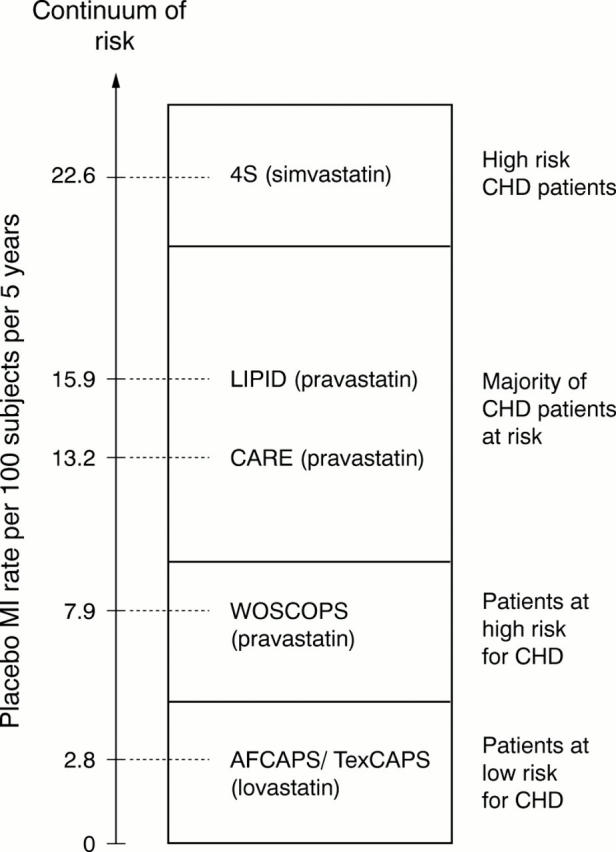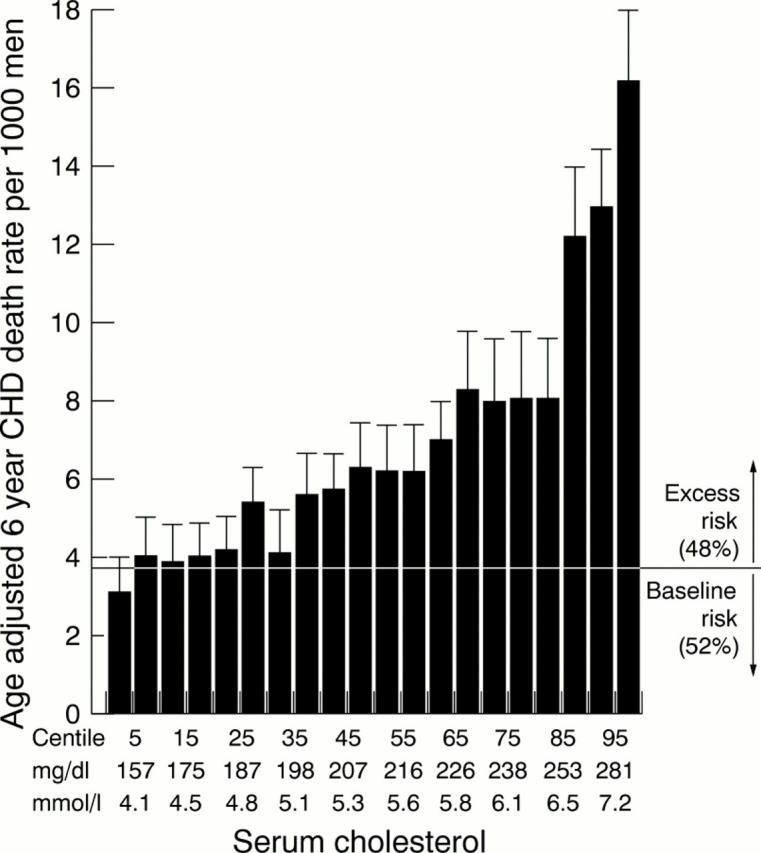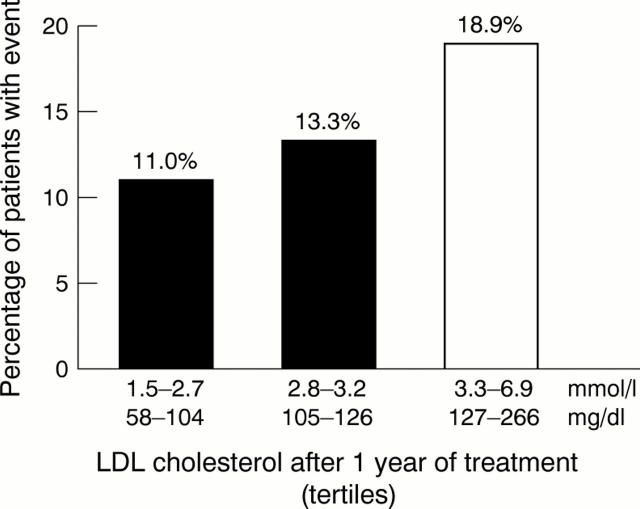Full Text
The Full Text of this article is available as a PDF (154.9 KB).
Figure 1 .

Landmark clinical event trials: relevance to clinical practice. A series of landmark clinical event trials have demonstrated the benefits of statins for primary and secondary prevention. These benefits have been seen in patients with coronary heart disease and high or normal blood cholesterol concentrations, as well as in asymptomatic patients at increased risk for coronary heart disease. 4S, Scandinavian simvastatin survival study; LIPID, long-term intervention with pravastatin in ischemic disease; CARE, cholesterol and recurrent events trial; WOSCOPS, West of Scotland coronary prevention study; AFCAPS/TexCAPS, Air Force/Texas coronary atherosclerosis prevention study.
Figure 2 .

Age adjusted six year CHD death rate per 1000 men screened for the multiple risk factor intervention trial (MRFIT) according to serum cholesterol percentile. The expected death rate of 3.7/1000 is represented by the horizontal line. Area above the line represents excess risk associated with serum cholesterol. T bars represent the upper limit of the 95% confidence interval. At all points above the 20th centile (> 181 mg/dl, > 4.68 mmol/l), an increase in serum cholesterol is associated with an increase in coronary heart disease. Reproduced from Martin et al, Lancet 1986;ii:933-6, with permission of the publisher.
Figure 3 .
Major coronary events among the simvastatin treated patients in the Scandinavian simvastatin survival study (4S) according to LDL cholesterol concentrations achieved after one year of treatment. 4S supports the view that greater LDL reductions yield measurably improved clinical outcomes: 18.9% of patients with LDL cholesterol (LDL-C) concentrations between 3.3-6.9 mmol/l (127-266 mg/dl) had a major coronary event, compared with 11.0% of patients with LDL-C between 1.5-2.7 mmol/l (58-104 mg/dl). Reproduced from Pederson, Eur Heart J 1998;19(suppl M):M15-21, with permission of the publisher.



